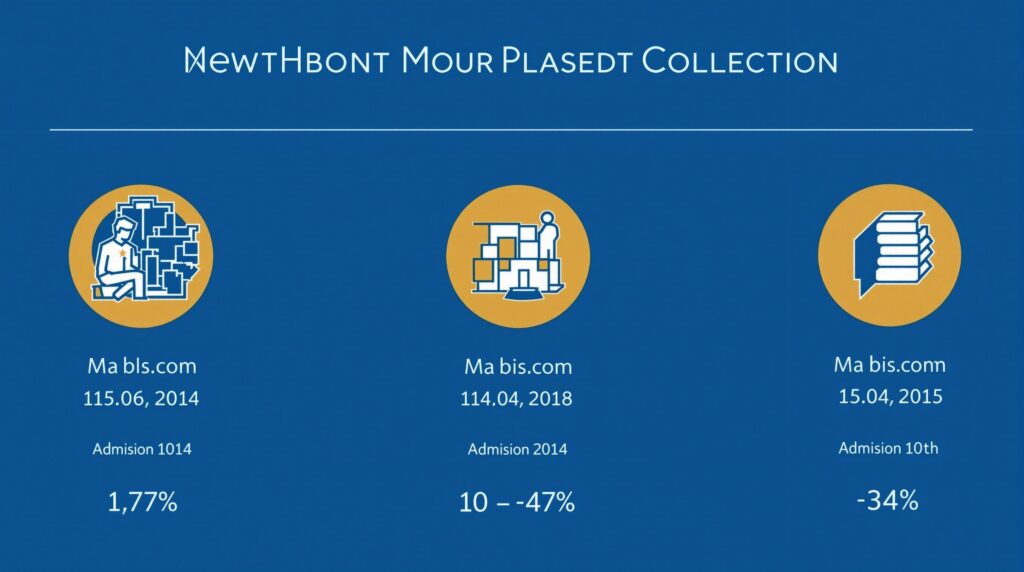Government grants present an incredible opportunity for financing your education and career development without the burden of repayment. In 2025, various federal programs are offering substantial funding to help students and professionals achieve their educational goals, with options ranging from Pell Grants for undergraduates to specialized grants for specific fields of study.
Key Takeaways
- Federal Pell Grants offer up to $7,395 for the 2024-2025 academic year for undergraduate students with financial need
- The TEACH Grant Program provides up to $4,000 annually for students pursuing teaching careers in high-need fields
- Various career-specific grants target fields like healthcare, education, and STEM disciplines
- Completing the FAFSA application is essential for accessing most government educational grants
- Many grants have specific eligibility requirements related to financial need, field of study, or demographic factors
Understanding Government Educational Grants in 2025
Unlike loans, government grants don’t require repayment, making them one of the most desirable forms of financial aid. What are some free government grants? They’re essentially financial gifts from federal, state, and local governments designed to help individuals pursue higher education or career development.
Government grants typically fall into several categories based on eligibility criteria. These include need-based grants (determined by your financial situation), merit-based grants (awarded for academic achievement), career-specific grants (targeted to particular fields), and demographic-specific grants (aimed at certain populations like minorities or veterans).
The application process for most federal educational grants starts with completing the Free Application for Federal Student Aid (FAFSA). This crucial document helps determine your eligibility for various federal aid programs, including grants, based on your financial need and other factors.

Major Federal Education Grants for 2025
The Federal Pell Grant remains the cornerstone of educational assistance for undergraduate students with exceptional financial need. For the 2024-2025 academic year, eligible students can receive up to $7,395. This grant doesn’t need to be repaid except in rare circumstances, such as withdrawing early from a program.
The Federal Supplemental Educational Opportunity Grant (FSEOG) provides between $100 and $4,000 per year to undergraduate students with exceptional financial need. These funds are administered directly by financial aid offices at participating schools, making it important to apply early as funds can be limited.
For those planning careers in education, the Teacher Education Assistance for College and Higher Education (TEACH) Grant offers up to $4,000 annually. Recipients must commit to teaching in high-need fields at schools serving low-income students for at least four years after graduation.
The Iraq and Afghanistan Service Grant is available to students whose parent or guardian died as a result of military service in Iraq or Afghanistan after September 11, 2001. Eligible students can receive grant amounts equal to the maximum Pell Grant award for that award year.
Career-Specific and Field of Study Grants
The healthcare field offers numerous grant opportunities through the Health Resources and Services Administration (HRSA). Programs like the Nurse Corps Scholarship Program provide funding for nursing students who commit to working in facilities with critical shortages after graduation.
STEM (Science, Technology, Engineering, and Mathematics) education grants have expanded significantly in recent years. The National Science Foundation offers various grants and fellowships for students pursuing degrees in STEM fields, with particular emphasis on increasing diversity in these disciplines.
For aspiring teachers, several national foundations offering educational grants complement federal programs like the TEACH Grant. These include initiatives focused on mathematics and science education, special education, and teaching in underserved communities.
The arts and humanities haven’t been forgotten either. The National Endowment for the Arts and the National Endowment for the Humanities offer grants for students pursuing careers in creative and cultural fields. These competitive grants often support specific projects or research initiatives.
State and Local Government Grants
Beyond federal programs, many states offer their own grant programs for residents. These vary widely by location but often include need-based grants similar to the Pell Grant but administered at the state level. For example, California’s Cal Grant program provides significant funding for eligible residents attending qualifying institutions within the state.
Many states have also developed workforce development grants targeting high-demand career fields within their region. These programs aim to address local labor shortages by funding education in specific industries like healthcare, technology, or manufacturing.
Local governments sometimes offer educational grants for residents as well. These might be administered through county or city education departments, economic development agencies, or community foundations. While typically smaller in scale than federal or state programs, these local grants often have less competition.
To find these opportunities, I recommend checking your state’s higher education agency website and exploring federal financial assistance programs that might be administered locally. Many state workforce development agencies also maintain databases of educational funding opportunities.
Grants for Specific Demographics
Several government grants target specific demographic groups to promote educational equity. For instance, the Bureau of Indian Education offers grants for Native American students pursuing higher education, while the Department of Veterans Affairs provides education benefits for veterans and their families.
Women pursuing education in traditionally male-dominated fields may qualify for specialized grants. Programs like the Women’s Educational Equity Act provide funding to promote gender equity in education and careers, particularly in STEM fields.
Students with disabilities can access grants through programs like the Vocational Rehabilitation State Grants program, which helps fund education related to employment goals. These programs are typically administered through state agencies with federal funding.
First-generation college students—those whose parents didn’t complete a bachelor’s degree—may qualify for additional grant funding through programs like TRIO Student Support Services, which provides comprehensive support including financial assistance.
How to Apply for Government Grants in 2025
The most crucial step in accessing government grants is completing the Free Application for Federal Student Aid (FAFSA). This form determines eligibility for most federal and many state grant programs based on financial need. For the 2025-2026 academic year, the FAFSA becomes available on October 1, 2024, and I recommend applying as early as possible.
Beyond the FAFSA, many grants require additional application materials such as essays, recommendations, or proof of eligibility for specific programs. Carefully review the requirements for each grant you’re pursuing and create a calendar of deadlines to stay organized.
When writing grant applications, focus on clearly demonstrating how you meet the eligibility criteria. Be specific about your educational goals, financial need, and how the grant will help you achieve your objectives. For competitive grants, personal statements that convey your passion and commitment can make a difference.
Consider seeking assistance from financial aid advisors at your school or prospective schools. They can help identify educational grants and career development funding you might qualify for and provide guidance on strengthening your applications.
Common Eligibility Requirements
Financial need is the primary eligibility factor for many government grants. This is typically determined by your Expected Family Contribution (EFC) as calculated through the FAFSA process. For need-based grants like the Pell Grant, lower EFC scores indicate higher financial need and greater eligibility.
Academic requirements vary by program. Some grants have minimum GPA thresholds or require enrollment in specific degree programs. Merit-based grants typically have higher academic standards than need-based programs.
Enrollment status can impact eligibility, with many grants requiring at least half-time enrollment. Some programs are limited to undergraduate or graduate students, while others may be available to both.
Field of study requirements apply to career-specific grants, which may require enrollment in approved programs or commitment to working in certain fields after graduation. For instance, education grants might require teaching service commitments in high-need schools.
Citizenship or residency status affects eligibility for most government grants. Many federal programs require U.S. citizenship or eligible non-citizen status, while state grants typically require state residency for a specified period.
Maximizing Your Grant Opportunities
Don’t limit yourself to just one grant application. Apply for multiple grant programs simultaneously to increase your chances of receiving funding. Many students piece together educational funding from several different grant sources.
Meet all deadlines and follow application instructions precisely. Simple errors or missing documentation can disqualify otherwise strong applications. Create a system for tracking application requirements and deadlines for each grant you pursue.
Once awarded a grant, understand the requirements for maintaining it. Many grants have ongoing eligibility criteria such as maintaining satisfactory academic progress or fulfilling service commitments. Failing to meet these requirements could result in having to repay the grant.
Finally, reapply annually as needed. Most educational grants require yearly renewal applications, typically through the FAFSA. Stay aware of any changes to grant programs or eligibility requirements from year to year.
Avoiding Grant Scams
Unfortunately, scammers often target students seeking financial aid. Legitimate government grants never require payment to apply or receive funds. Be suspicious of any organization charging fees to access government grants.
Be wary of guarantees. No legitimate organization can guarantee you’ll receive a grant. Similarly, unsolicited offers of “free money” that arrive via email, phone, or social media are typically scams.
Verify all grant opportunities through official government websites or your school’s financial aid office. Legitimate federal grants can be researched through StudentAid.gov, while state grants are typically listed on your state’s higher education agency website.
If you’re unsure about a grant opportunity, consult with a financial aid professional at your school. They can help verify legitimate opportunities and steer you away from potential scams.
Looking Ahead: Trends in Government Educational Grants
In recent years, there’s been increasing focus on grants for workforce development in high-demand fields. This trend is expected to continue in 2025, with expanded funding for education in healthcare, technology, and other growth sectors.
Simplification of the application process is another ongoing trend. The FAFSA Simplification Act continues to be implemented, making it easier for students to apply for federal financial aid, including grants.
There’s also growing attention to addressing educational inequities through targeted grant programs. Expect continued expansion of grants aimed at increasing diversity in various fields and supporting students from underrepresented backgrounds.
Finally, as remote and online education becomes more prevalent, watch for grant programs that specifically support distance learning opportunities and the technology needed to access them.



